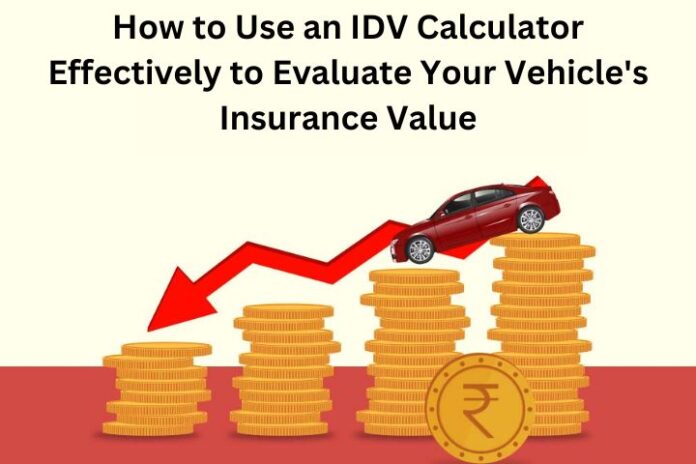Insurance is a crucial aspect of responsible vehicle ownership, providing financial protection in case of accidents, theft, or damage to your vehicle. To ensure you have the right level of coverage, understanding the Insured Declared Value (IDV) is essential. IDV is a significant factor that determines your insurance premium and the compensation you’ll receive in case of a claim. In this article, we’ll explore the importance of IDV in car insurance and guide you on how to use an IDV calculator effectively to evaluate your vehicle’s insurance value.
Understanding IDV in Insurance
Insured Declared Value (IDV) is the current market value of your vehicle, and it plays a vital role in the calculation of your insurance premium. IDV is essentially the maximum sum that you can receive from your insurance company in case your vehicle is stolen or declared a total loss following an accident.
IDV is crucial for several reasons:
1. Premium Calculation: The IDV is one of the primary factors that determine your insurance premium. In general, the higher the IDV, the higher the premium you’ll have to pay.
2. Claim Settlement: In the event of a claim, the IDV is used to calculate the compensation you’ll receive. This value represents the estimated market worth of your vehicle at the time of the accident.
3. Depreciation: As your vehicle ages, its IDV decreases due to depreciation. This means that the amount you can claim diminishes over time. Therefore, it’s essential to keep your vehicle’s IDV updated to ensure you’re adequately compensated.
Using an IDV Calculator Effectively
An IDV calculator is a valuable tool that helps you determine the accurate IDV for your vehicle. To use it effectively, follow these steps:
1. Gather Information: Start by gathering all the necessary information about your vehicle, including its make, model, variant, manufacturing year, and the city where it’s registered.
2. Visit an Insurance Provider’s Website: Most insurance companies offer IDV calculators on their websites. Navigate to the official website of your chosen insurance provider and find the IDV calculator tool.
3. Enter Vehicle Details: Input all the relevant vehicle details into the calculator. Make sure the information is accurate and up-to-date. Incorrect data can lead to an incorrect IDV calculation.
4. Select Add-Ons: Some IDV calculators allow you to include additional information about any add-on covers or accessories fitted in your vehicle. These add-ons can influence the IDV calculation.
5. Calculate IDV: After entering all the necessary details, click the “Calculate IDV” or similar button on the calculator tool. The IDV calculator will provide you with the estimated market value of your vehicle based on the information you provided.
6. Compare the IDV: Once you have the calculated IDV, it’s essential to compare it with your existing insurance policy. Ensure that the IDV mentioned in your policy matches the IDV calculated using the tool. If there’s a significant difference, it might be time to update your policy.
Factors That Influence IDV Calculation
The following factors play a significant role in calculating the IDV for your vehicle:
1. Vehicle Age: As your vehicle ages, its market value decreases due to depreciation. The older your vehicle, the lower its IDV will be.
2. Make and Model: The make and model of your vehicle also influence its IDV. High-end or luxury cars typically have higher IDVs than budget vehicles.
3. Variant: Different variants of the same model can have varying IDVs. Vehicles with more features and higher market demand generally have higher IDVs.
4. City of Registration: The city where your vehicle is registered affects the IDV. Vehicles in metropolitan areas tend to have higher IDVs due to increased demand.
5. Fittings and Accessories: Any additional fittings or accessories added to your vehicle can increase its IDV. Be sure to include these when using an IDV calculator.
6. Condition: The overall condition of your vehicle, including its mileage and wear and tear, can affect the IDV.
The Importance of Accurate IDV
Having an accurate IDV is crucial for various reasons:
1. Fair Compensation: In case of an accident or theft, an accurate IDV ensures that you receive fair compensation for your vehicle’s loss. It prevents underinsurance or overinsurance.
2. Adequate Coverage: An accurate IDV helps you determine the right level of coverage for your vehicle. It ensures that you are adequately protected and that you are not paying for unnecessary coverage.
3. Premium Calculation: Your insurance premium is directly linked to your vehicle’s IDV. An accurate IDV ensures that you are paying the appropriate premium for the coverage you receive.
4. Policy Renewal: When renewing your insurance policy, ensuring that the IDV is up-to-date prevents complications during claims. It also allows you to adjust your coverage as your vehicle ages.
5. Transparency: An accurate IDV promotes transparency between you and your insurance provider. It ensures that you both have a clear understanding of the vehicle’s value and the terms of the policy.
Updating Your Vehicle’s IDV
Vehicle depreciation is an ongoing process, and as your vehicle ages, its IDV decreases. To ensure that you have an accurate IDV, consider the following points:
1. Regular Updates: It’s essential to update your vehicle’s IDV annually when renewing your insurance policy. This update reflects the depreciation of the vehicle’s market value.
2. Timely Renewals: Renew your insurance policy before it expires to avoid a lapse in coverage. An expired policy can lead to the loss of No Claim Bonus and other complications.
3. Proper Documentation: Maintain records of your vehicle’s condition, service history, and any modifications or accessories. This documentation can be valuable in determining the vehicle’s IDV.
4. Evaluate the Vehicle: Periodically assess the condition of your vehicle and its market value. If you believe the IDV in your policy is significantly lower than the vehicle’s current value, consider requesting an update.
5. Professional Inspection: In some cases, insurance companies may require a professional inspection of your vehicle to determine its IDV. This is common for older or vintage vehicles.
6. Consult Your Insurance Provider: If you’re unsure about your vehicle’s current IDV or how to update it, consult your insurance provider. They can provide guidance and assistance in ensuring the accuracy of the IDV.
Conclusion
Using an IDV calculator effectively is crucial for evaluating your vehicle’s insurance value accurately. IDV is a key factor in determining your insurance premium and the compensation you’ll receive in case of a claim. Ensuring that your IDV is up-to-date prevents underinsurance, overinsurance, and complications during claims.
By considering the factors that influence IDV calculation and regularly updating the value, you can enjoy peace of mind, knowing that you have the right level of coverage for your vehicle. Whether you drive a brand-new car or an older model, maintaining an accurate IDV is essential for responsible vehicle ownership and a seamless insurance experience.
Also Read: Analyzing the Benefits and Drawbacks of Third-Party Bike Insurance







